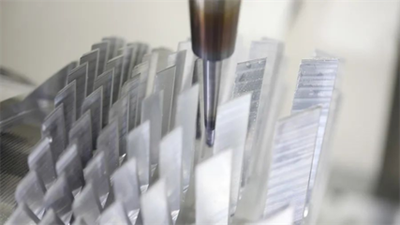


Molecular pump
A molecular pump is a vacuum pump that uses a high-speed rotating rotor to transfer momentum to gas molecules, allowing them to obtain directional speed, thereby being compressed, driven to the exhaust port, and then pumped away by the front stage.
Key words:
Classification:
Key words:
Tool matrix-Fixture matrix
Product Description
A molecular pump is a vacuum pump that uses a high-speed rotating rotor to transfer momentum to gas molecules, allowing them to obtain directional speed, thereby being compressed, driven to the exhaust port, and then pumped away by the front stage.
Classification:
1) Traction molecular pump - gas molecules collide with the high-speed moving rotor and gain momentum, and are driven to the outlet of the pump.
There are many forms of traction molecular pumps. According to the structure, there are two main types: one is the series combination of turbine blades and disk traction pump; the other is the series combination of turbine blades and cylindrical traction pump. The turbine stage is mainly used to increase the pumping speed of the pump. Generally, the blade shape is used to increase the pumping speed, and the number of stages is within l0. The traction stage is mainly used to increase the compression ratio of the pump and increase the outlet pressure of the pump.
2) Turbomolecular pump - relies on the cooperation of high-speed rotating moving blades and stationary fixed blades to achieve air pumping. This type of pump usually works under molecular flow conditions.
The disc traction stage is formed by cutting out several profile grooves according to certain rules on the plane of a flat disc, and then connecting several discs in series. The profile lines include Archimedean spiral, logarithmic spiral, and circular spiral. Arc etc. When pumping, the high-speed rotating disk "drags" the gas molecules, causing them to flow in a directional direction from the inside to the outside and from the outside to the inside along the groove, thereby achieving the purpose of pumping.
3) Composite molecular pump - It is a composite molecular vacuum pump that is a series combination of two types of molecular pumps: turbine type and traction type.
The cylindrical traction stage is a groove with a certain cross-sectional shape on the cylindrical surface of the cylindrical rotor or stator, such as rectangular, arc-shaped, triangular and other shapes of multi-head spiral grooves. Since the profile grooves of the simple traction pump are opened on the outer surface of the rotor cylinder or the inner surface of the pump, the higher linear speed of the outer circle of the cylinder can be fully utilized to transfer momentum to the gas molecules and improve the pumping effect of the pump. In design and manufacturing, a more ideal air extraction effect can be achieved by changing the angle between the spiral groove channel and the air extraction direction (spiral rise angle).
Working conditions:
(1) The rotor speed reaches 20000r/min, so the molecular pump takes a long time to start.
(2) The gas is in a molecular flow state, so it needs to be equipped with a backing pump. Generally, a rotary vane pump is used as the backing pump.
Structural features:
The compound molecular pump is a series combination of a turbo molecular pump and a traction molecular pump, integrating the advantages of both pumps. The pump has a large pumping speed and a high compression ratio within a wide pressure range ((10-6 ~ 1Pa), which greatly increases the outlet pressure of the pump. A type of pump produced by the French Alcatle company uses gas static pressure bearings and The dynamically sealed composite molecular pump can be completely oil-free and exhaust directly to the atmosphere without a backing pump.
Design Points:
In the design of a composite molecular pump, the matching and connection relationship between the turbine stage and the traction stage must be properly handled. Since the turbine stage has a large pumping area and high pumping speed, while the traction stage groove has a small pumping area, at the connection between the two structures, the flow pattern of the gas molecules compressed by the turbine blades suddenly changes, causing The movement of gas molecules changes from order to disorder at the joints, causing the backflow to increase and the pumping capacity to decrease. Therefore, a transition stage structure should be added at the transition point between the turbine stage and the traction stage during design to improve the pumping performance of the pump.
With the continuous improvement of composite molecular pumps, their application fields are becoming wider and wider. They can replace diffusion pumps in some pumping systems, shortening the pumping time of the system, and obtaining a clean vacuum environment without oil pollution.
Our company specializes in the production and sales of special tools and fixtures for turbomolecular pump impellers of various specifications.
Full range of processing provided:
1. Process plan;
1.1 μ-level fixture;
1.2 μ-level tool;
1.3 μ-level (stress/heat shrink) tool system;
2. Testing plan
2.1 Dynamic balancing machine;
2.2 Vibration tester;
3. High-pressure internal cooling accessories for high-speed aluminum processing;

Related Products
Related Cases
Welcome your message consultation


